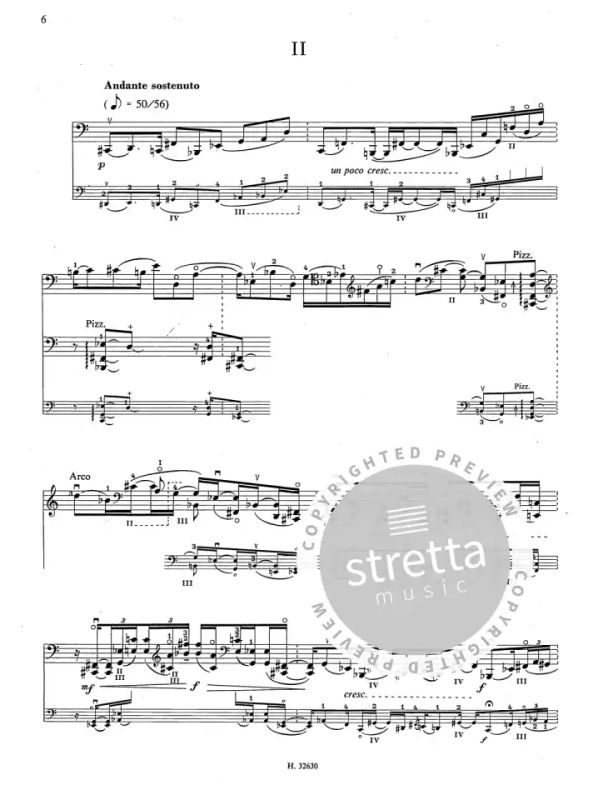

Henri Dutilleux was internationally acclaimed for his work, winning prizes such as the Gold Medal of the Royal Philharmonic Society and the UNESCO's International Rostrum of Composers, among many others. A quotation from Bartok's piece 'Music for Strings, Percussion, and Celesta' can be noticed at the end of the first verse. The whole set requires the lowest strings of the Cello to be turned lower: G string to F sharp and C string to B flat. Henri Dutilleux composed the first part of this volume for the celebration and added the final two pieces later in 1976.

It was first performed in an audition by the latter in 1982. Graphs of the relative strengths of the overtones present in the sound of the cello's A string are given.“Written on the occasion of Paul Sacher's birthday, this 3 Strophes in the name of Sacher features three Cello pieces composed by Henri Dutilleux and reviewed by Mstislav Rostropovitch. One appendix contains a catalogue of 20th century solo cello works that use scordatura, and another presents the results of a preliminary comparison between the sound spectrum of the cello's A string when the instrument is tuned normally versus when it is tuned B'-F♯-d-a as in Kodaly's Solo Sonata, Op. A significant discussion of as-fingered, at-pitch, and hybrid notational practices along with suggestions for performers regarding dynamic scordatura performance aids and instrument care appear in this last chapter. A final chapter includes considerations about practical concerns for both composers and performers of scordatura works. These discussions also offer performance suggestions. These investigations allow for a detailed classification of the various rationales behind the use of scordatura techniques as (1) feasibility scordaturas, tunings that make the otherwise unplayable possible, (2) timbral scordaturas, tunings that affect a change in the color of sound the instrument produces, and (3) special effects scordaturas, tunings that are used primarily for glissando or other special effects. The analyses of works by Peter Sculthorpe (Requiem for 'cello alone'), Laszlo Borsody (Alone), Ralph Shapey (Krosnick Soli), Alfred Schnittke (Klingende Buchstaben), Kaija Saariaho (Spins and Spells), and Henri Dutilleux ( Trois Strophes sur le nom de SACHER) focus on how scordatura is used and to what effect. 8 lay the historical background for the use of scordatura in unaccompanied works for cello later in the 20th century. Significant discussions of historical practices on the lyra viol, an instrument that used more than 60 different tunings, Heinrich Ignaz Franz von Biber's Mystery Sonatas for violin, and Zoltan Kodaly's Sonata for Solo Cello, Op. The focus of this research has been the use of scordatura in unaccompanied works for cello in the 20th century. Numerous works for string instruments throughout history make use of scordatura, which is a term that refers to any tuning that is not the standard one for an instrument. The 20th century has seen a flowering of the use of alternate tunings on the cello.


 0 kommentar(er)
0 kommentar(er)
